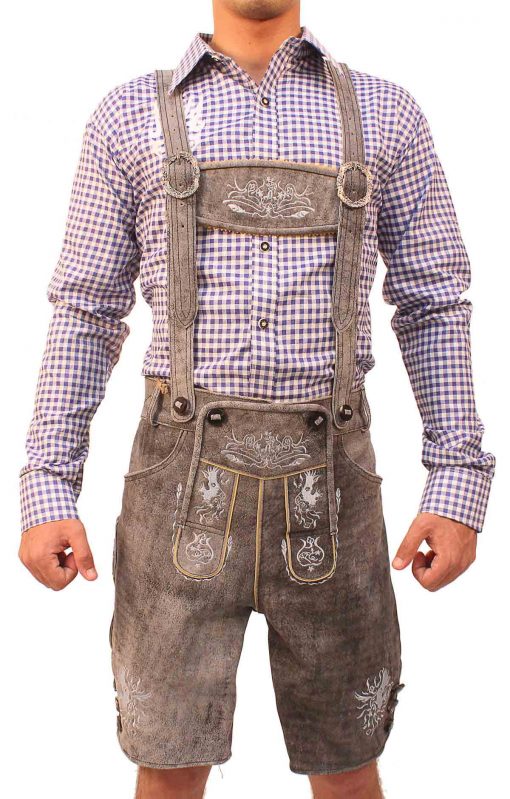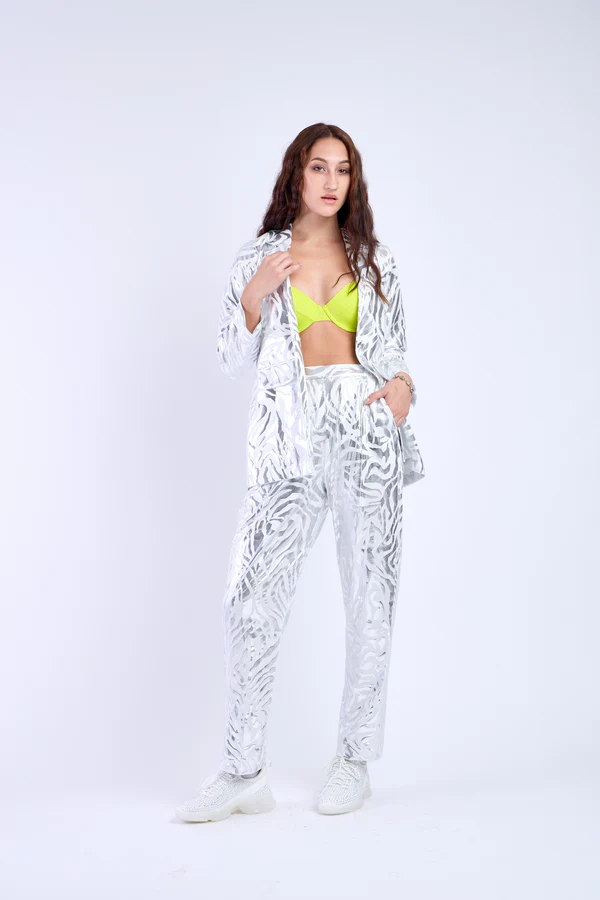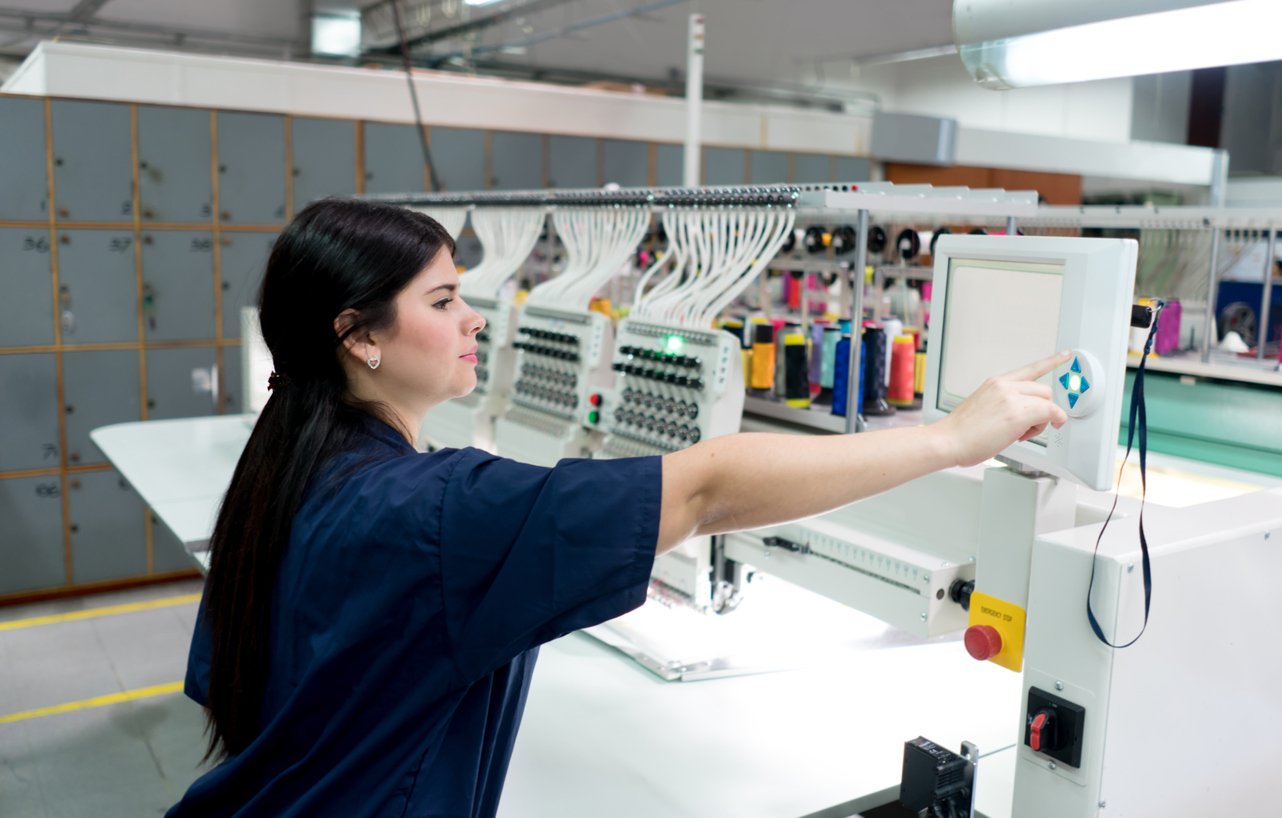History of Lederhosen: From Workwear to Bavarian Icon
The Humble Beginnings of Lederhosen
Long before Lederhosen became a stylish symbol of Bavarian pride, they served a practical purpose. Originating in the Alpine regions of Germany and Austria, these leather breeches were designed for durability and utility. Farmers, hunters, and workers wore them due to their toughness and comfort during long hours of labor. The word Lederhosen literally means “leather trousers,” which already gives a clue to their robust construction. They were resistant to wear and tear, repelled dirt, and were easy to clean—making them ideal for harsh outdoor conditions. Their design allowed freedom of movement while still offering protection, which made them indispensable in rural life. Over time, Lederhosen began to evolve, but their workwear roots remain a central part of their story.
Alpine Culture and the Birth of Traditional Attire
Lederhosen weren’t just functional—they also began to represent Alpine culture. As communities in Bavaria, Tyrol, and South Germany started to form a shared identity, regional attire became a source of pride. Local events like fairs, harvest festivals, and religious gatherings featured men proudly wearing their best leather garments. These weren’t the everyday dirty work pants, but finely decorated Lederhosen meant for public display. Designs varied between valleys and villages, incorporating regional embroidery, buttons, and suspenders. This cultural association helped elevate Lederhosen from simple workwear to traditional costume, eventually laying the foundation for what would become known as Trachtenmode (traditional fashion). This turning point is crucial in understanding why Lederhosen have become so much more than just tough trousers.
Noble Influence and Upper-Class Adaptation
Interestingly, Lederhosen also found their way into the wardrobes of the aristocracy. In the 18th and 19th centuries, the upper class started embracing rustic, countryside fashion—especially when retreating to their Alpine estates for hunting trips. Leather trousers made from finer deerskin began appearing in noble wardrobes, often customized with intricate embroidery and silver buttons. This helped transform Lederhosen into a fashionable item rather than just workwear. What was once a symbol of the laboring class now had the approval of nobility. This endorsement led to greater social acceptance and wider popularity. When both peasants and princes wore Lederhosen, the garment gained a unique position across social classes, a rare trait for traditional attire.
Lederhosen and the Rise of Bavarian Nationalism
During the 19th century, Germany underwent massive political and cultural changes, and Lederhosen played a surprising role in the movement toward Bavarian nationalism. As Bavaria sought to preserve its distinct identity amidst growing German unification, traditional clothing like Lederhosen became symbols of pride and resistance. In this era, Trachtenvereine (traditional costume clubs) were established to preserve folk culture. These groups actively promoted Lederhosen and other Bavarian garments at events and parades. Wearing Lederhosen became a statement of loyalty to Bavarian heritage. This cultural preservation was essential in ensuring Lederhosen did not disappear with modern industrial changes. Instead, they thrived as emblems of identity.
Oktoberfest and the Global Stage
The global popularity of Lederhosen skyrocketed thanks in large part to Oktoberfest. What began as a royal wedding celebration in 1810 became the world’s largest beer festival, drawing millions of visitors each year. Tourists were fascinated by the festive clothing, and locals donned their finest Lederhosen for the occasion. This public visibility helped introduce the garment to international audiences. Today, wearing Lederhosen at Oktoberfest is practically a requirement. It’s more than just a fashion choice—it’s a way of participating in tradition. The Trachten culture experienced a revival, with designers modernizing Lederhosen for both casual and formal occasions. Explore more styles for men through this Bavarian collection that honors this evolving tradition.
Design Evolution: Classic Cuts to Modern Fits
Over the years, Lederhosen have gone through various transformations. Traditional designs were often knee-length with buttoned flaps and decorative suspenders. Today, styles range from short, sporty cuts to full-length pants, and materials include everything from classic deerskin to faux leather for budget-conscious buyers. Modern tailoring also focuses more on fit and comfort, especially for festive occasions. Embroidery and color schemes now cater to a wide demographic, from young Oktoberfest-goers to older traditionalists. To ensure a good experience, knowing how they should fit is essential—this guide helps you find the perfect size and cut without compromising tradition.
Symbolism in Bavarian Celebrations
Beyond Oktoberfest, Lederhosen play a role in weddings, baptisms, folk dances, and regional competitions. Men wear them proudly as a representation of heritage and masculinity. The garment often signifies a rite of passage in Bavarian families. A well-kept pair of Lederhosen can last for decades, passed from father to son. In fact, receiving your first pair of Lederhosen is a momentous occasion in many households. These traditions ensure Lederhosen remain deeply embedded in Bavarian life. Whether adorned with family crests or local patterns, they’re a deeply personal and communal emblem.
Materials and Craftsmanship: Built to Last
Authentic Lederhosen are typically made from wild deerskin, goatskin, or cowhide. Each type of leather has unique characteristics—deerskin is soft and supple, while cowhide is thicker and more rugged. Traditional artisans handcraft many of the higher-end pieces, using time-honored methods passed down through generations. This level of detail justifies the higher price tag and ensures longevity. The stitching, embroidery, and hardware are also carefully chosen for durability and aesthetic appeal. Buying Lederhosen from reputable sources like this online store ensures you’re getting quality that matches the garment’s storied legacy.
Women’s Influence and Gender Adaptation
While Lederhosen began as male workwear, they’ve also found favor among women in recent decades. Women’s Lederhosen often feature a more tailored silhouette and additional detailing such as colorful embroidery or rhinestones. Their rising popularity reflects the modern push for inclusive cultural wear. These adaptations still respect traditional roots while embracing contemporary fashion norms. Women now wear Lederhosen to Oktoberfest, folk festivals, and even weddings. This gender-fluid evolution highlights the garment’s adaptability and enduring appeal across ages and identities.
Dirndl vs. Lederhosen: Bavarian Wardrobe Essentials
Though both are iconic, the Dirndl and Lederhosen serve different purposes. The Dirndl is often associated with femininity and grace, while Lederhosen represent rugged masculinity. However, today’s fashion scene encourages mixing and matching traditional pieces. Many couples coordinate their outfits, showcasing how Dirndl and Lederhosen complement each other beautifully. Each outfit tells a story—one rooted in history, culture, and community. Together, they create a complete portrait of Bavarian heritage. Both styles continue to be reinvented for modern wear, bridging the gap between tradition and trend.
The Revival of Lederhosen in Pop Culture
Thanks to movies, music, and international tourism, Lederhosen are enjoying a resurgence. Celebrities spotted wearing them at Oktoberfest or on social media help keep the trend alive. Influencers also promote sustainable fashion by investing in traditional, long-lasting clothing rather than fast fashion. Designers have introduced streetwear hybrids that mix Lederhosen with hoodies, sneakers, and other urban staples. The result is a garment that honors the past while embracing the present. This modern twist appeals to younger audiences, ensuring Lederhosen remain relevant.
Lederhosen as Heritage Fashion
In today’s fast-moving fashion industry, Lederhosen stand out for their timeless appeal. They aren’t just seasonal costumes but represent a broader movement toward slow fashion, heritage craftsmanship, and cultural authenticity. Whether worn to a festival or family gathering, they offer more than just style—they carry meaning. As more people seek to reconnect with their roots or experience authentic culture, the demand for quality Lederhosen continues to grow. Their legacy as Bavarian icons is well-earned and shows no signs of fading.
Sustainability and Leather Production
With growing interest in sustainable fashion, leather production practices have come under scrutiny. However, many Lederhosen manufacturers now follow eco-conscious practices. Ethical sourcing, biodegradable tanning methods, and reduced chemical usage are becoming standard. Traditional leather artisans often use every part of the hide, minimizing waste. This aligns with sustainability values and supports local economies. Buyers are encouraged to invest in one high-quality pair rather than multiple low-cost alternatives, a practice that echoes Lederhosen’s original ethos of durability and utility.
FAQs
1. Are Lederhosen only worn in Bavaria?
While Lederhosen are most closely associated with Bavaria, they are also popular in Austria, South Tyrol, and parts of Switzerland.
2. What is the best material for authentic Lederhosen?
Deerskin is considered the finest material due to its softness and durability, though goat and cowhide are also traditional choices.
3. Can Lederhosen be worn outside of Oktoberfest?
Absolutely. Lederhosen are often worn at weddings, cultural events, and family gatherings throughout the year.
4. How long do Lederhosen typically last?
With proper care, a quality pair can last 20 years or more, making it a worthy investment.
5. Are there vegan or faux-leather Lederhosen options?
Yes, modern manufacturers now offer faux-leather alternatives that are more affordable and animal-friendly.
6. Do you need suspenders with every pair of Lederhosen?
Not always. While traditional designs often include suspenders, modern styles sometimes opt for belt loops instead.
Let me know if you’d like this content formatted for WordPress or exported to a downloadable format.






